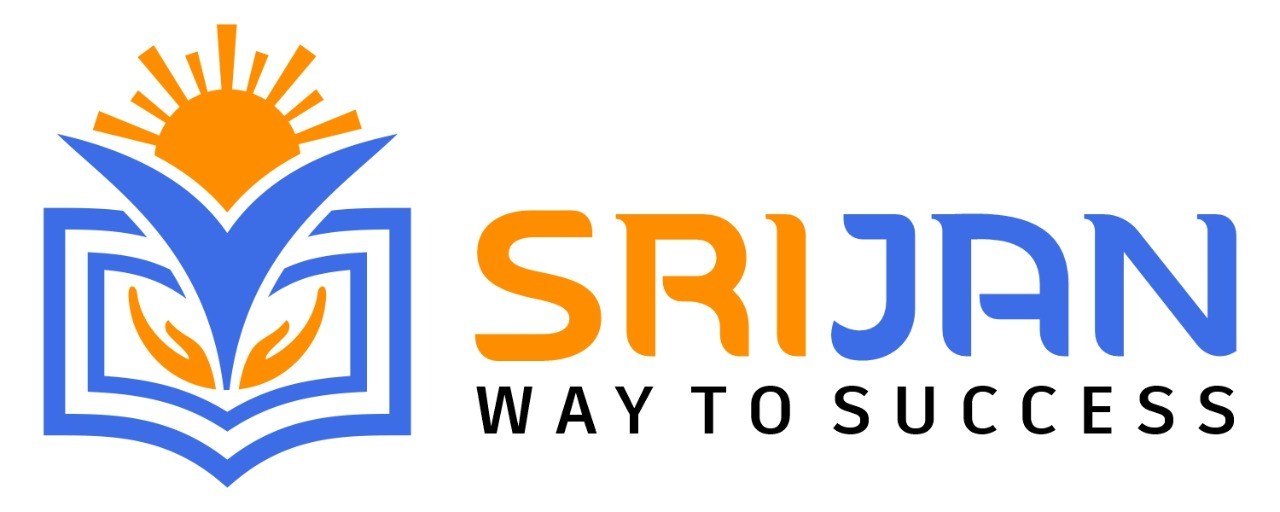Improve Your Career with SAP EHS Training in Environmental Safety
SAP EHS Training || SAP EHS certification Training || SAP EHS Online training || SAP EHS self-paced training || SAP EHS Instructor-Led training
Key Features of Training:
- 30 Hrs Instructor-led Training
- Mock Interview Session
- Project Work & Exercises
- Flexible Schedule
- 24 x 7 Lifetime Support & Access
- Certification and Job Assistance
SAP EHS (Environment, Health, and Safety):
SAP EHS (Environment, Health, and Safety) is a software solution that helps organizations manage and optimize their environmental, health, and safety processes. It enables businesses to track and mitigate risks, ensure compliance with regulations, and promote sustainable practices. By integrating data and processes, SAP EHS supports efficient management of workplace safety, hazardous materials, emissions, and more, contributing to better overall operational and environmental performance.
Prerequisites: Who can attend SAP EHS Training?
- Basic Computer Skills
- Understanding of Environmental, Health, and Safety Concepts
- Background in SAP
- Industry Knowledge
- Educational Background
- Job Role
- Company's Requirements
- Good Communication Skills
Responsibilities of SAP EHS Consultant:
- Requirements Analysis
- Solution Design
- Configuration and Customization
- Data Management
- Integration
- Testing and Validation
- Training and Documentation
- Support and Maintenance
- Regulatory Compliance
- Project Management
Course Benefits:
- Job opportunities
- Promotion opportunities (Salary Hike)
- Increased productivity
- Improved decision-making
- Gain in-demand skills
What is the future of SAP EHS Consultant?
- Digital Transformation and Automation
- Sustainability and ESG (Environmental, Social, and Governance) Reporting
- Regulatory Compliance and Risk Management
- Health and Safety Technology
- Industry-Specific Solutions
- Supply Chain Transparency
The fee for SAP EHS (Environment, Health, and Safety) training can vary depending on several factors such as the location, duration of the course, training format, and level of expertise. SAP offers various training options for EHS, including instructor-led courses, e-learning courses, and virtual live classrooms.
For More details you can Register Sign Up
SAP EHS (Environment, Health, and Safety) Certification FAQ's:
1. What is SAP EHS Certification?
A: SAP EHS Certification is a formal recognition provided by SAP to individuals who demonstrate their expertise in implementing, configuring, and managing SAP EHS solutions. It validates your skills and knowledge in using SAP EHS to address environmental, health, and safety requirements within organizations.
2. Why should I pursue SAP EHS Certification?
A: SAP EHS Certification can enhance your career prospects in the EHS field. It validates your expertise, making you more attractive to potential employers or clients seeking professionals with SAP EHS skills. It also demonstrates your commitment to staying current with industry best practices.
3. What are the prerequisites for SAP EHS Certification?
A: Prerequisites can vary based on the specific certification level you're aiming for. Generally, having a basic understanding of SAP software, EHS concepts, and relevant industry practices can be beneficial. Check SAP's official certification website for specific prerequisites.
4. How do I prepare for SAP EHS Certification?
A: Preparation typically involves a combination of hands-on experience with SAP EHS, self-study using official SAP training materials, attending relevant training courses, and practicing with sample questions or scenarios. SAP Learning Hub and SAP Training Centers can be valuable resources.
5. Where can I find SAP EHS Certification materials and resources?
A: SAP Learning Hub provides access to official SAP training materials, e-learning courses, and practice exams. Additionally, SAP training centers, online forums, and community resources can offer study guides, tutorials, and tips from experienced professionals.
6. What types of SAP EHS Certifications are available?
A: SAP offers different levels of certification, such as Associate, Professional, and Specialist. These certifications cover various aspects of SAP EHS, including incident management, hazardous substance management, occupational health, and more.
7. How do I register for the SAP EHS Certification exam?
A: You can register for SAP certification exams through the SAP Training and Certification Shop. You'll need to create an SAP certification profile, choose the exam you want to take, and schedule a date at a testing center.
8. What format is the SAP EHS Certification exam?
A: The exam format can vary based on the certification level, but it usually consists of multiple-choice questions or scenario-based questions. The questions assess your understanding of SAP EHS concepts, functionalities, and real-world scenarios.
9. How much does SAP EHS Certification cost?
A: The cost of SAP EHS Certification can vary depending on the certification level and location. Check the SAP Training and Certification Shop for up-to-date pricing information.
10. How long is the SAP EHS Certification valid?
A: SAP EHS Certifications are typically valid for a specific period, often around two years. To maintain your certification, you may need to participate in continuous learning activities or renew your certification by passing a recertification exam.
SAP EHS (Environment, Health, and Safety) Certification:
SAP offers certifications for various modules and aspects of its software, including the SAP EHS (Environment, Health, and Safety) module. SAP EHS certification validates your skills and knowledge in implementing, configuring, and managing SAP EHS solutions to address environmental, health, and safety requirements within organizations. It can be a valuable credential for professionals working in fields related to EHS, compliance, and sustainability. Here's some information about SAP EHS certification:
Types of SAP EHS Certifications: SAP EHS certification is available at different levels and may cover various aspects of the EHS module. The specific certifications offered can change over time, so it's important to visit SAP's official certification website for the latest information. Some examples of SAP EHS certification tracks include:
- SAP Certified Application Associate - SAP EHS Management (C_EHS_73): This certification is for individuals who possess the basic knowledge required to consult in the area of SAP Environment, Health, and Safety Management (SAP EHSM).
- SAP Certified Technology Associate - SAP Incident Management & SAP EHS Management (C_TPLM40_65): This certification validates skills related to SAP Incident Management and SAP EHS Management, focusing on incident management processes.
- SAP Certified Application Specialist - SAP EHS Management (C_S4EWM_1909): This certification focuses on specific functionalities within the SAP EHS Management module, demonstrating expertise in those areas.
Prerequisites: The prerequisites for SAP EHS certification can vary based on the specific certification track. Generally, having a foundational understanding of SAP software, EHS concepts, and relevant industry practices can be beneficial. It's advisable to review the prerequisites specific to the certification you're interested in on SAP's official certification website.
Preparation: Preparing for SAP EHS certification involves a combination of hands-on experience with SAP EHS, self-study using official SAP training materials, attending relevant training courses, and practicing with sample questions or scenarios. SAP Learning Hub and SAP Training Centers are valuable resources for preparation materials.
Exam Format: SAP EHS certification exams typically consist of multiple-choice questions or scenario-based questions that assess your understanding of SAP EHS concepts, functionalities, and real-world scenarios. The exact format can vary based on the certification level.
Validity and Renewal: SAP EHS certifications are generally valid for a specific period, often around two years. To maintain your certification, you may need to participate in continuous learning activities or renew your certification by passing a recertification exam.
SAP EHS (Environment, Health, and Safety) Curriculum:
1. SAP EHS Overview:
- Introduction to SAP EHS and its role in environmental, health, and safety management.
- Overview of key EHS functionalities and modules within SAP EHS.
2. Basic Concepts and Configuration:
- Understanding the basic concepts of SAP EHS data structures, objects, and relationships.
- Configuring basic settings for SAP EHS modules, including specification management, phrases, and phrases libraries.
3. Incident Management:
- Introduction to incident management processes and tools in SAP EHS.
- Configuring incident management workflows, notification, investigation, and reporting.
4. Hazardous Substance Management:
- Managing hazardous substances and materials in compliance with regulations.
- Configuring data structures for substances, mixtures, and dangerous goods.
- Handling safety data sheets (SDS) creation, distribution, and management.
5. Occupational Health and Industrial Hygiene:
- Managing workplace health and safety.
- Configuring health surveillance, medical examination, and exposure assessment processes.
- Recording occupational health incidents and near misses.
6. Waste Management:
- Managing waste generation, disposal, and tracking.
- Configuring waste management processes, including waste codes, disposal codes, and reporting.
7. Regulatory Compliance:
- Understanding regulatory frameworks and requirements related to EHS.
- Configuring SAP EHS to ensure compliance with various regulations.
8. Reporting and Analytics:
- Generating reports and analytics using SAP EHS data.
- Utilizing built-in reporting tools and functionalities.
9. Integration with Other SAP Modules:
- Integrating SAP EHS with other SAP modules like SAP EHSM (Environment, Health, and Safety Management) and SAP S/4HANA.
- Ensuring data consistency and seamless information flow.
10. Sustainability and Environmental Performance:
- Understanding how SAP EHS contributes to sustainability efforts.
- Tracking and reporting environmental performance metrics.
11. Case Studies and Practical Scenarios:
- Working through real-world case studies and scenarios to apply SAP EHS concepts in practical situations.
12. Certification Preparation:
- Preparing for SAP EHS certification exams, including practice tests and study resources.
SAP EHS (Environment, Health, and Safety) Interview questions and Answers:
1. What is SAP EHS?
A: SAP EHS (Environment, Health, and Safety) is a module within SAP ERP software that focuses on managing and ensuring compliance with environmental, health, and safety regulations within an organization.
2. What are the key components of SAP EHS?
A: The key components of SAP EHS include Incident Management, Risk Assessment, Occupational Health, Industrial Hygiene, Product Safety, and Waste Management.
3. Can you explain Incident Management in SAP EHS?
A: Incident Management in SAP EHS involves capturing and managing incidents such as accidents, spills, and near misses. It helps organizations track and analyze incidents to prevent their recurrence and improve workplace safety.
4. How does SAP EHS help with Risk Assessment?
A: SAP EHS facilitates the identification, evaluation, and management of risks associated with various processes, materials, and activities. It helps organizations implement preventive measures to reduce risks and ensure compliance with regulations.
5. Describe the role of Occupational Health in SAP EHS.
A: Occupational Health in SAP EHS focuses on managing employee health and wellness. It includes functionalities for medical surveillance, health assessments, and tracking exposure to hazardous substances.
6. What is Industrial Hygiene in SAP EHS?
A: Industrial Hygiene in SAP EHS involves monitoring and managing workplace conditions to ensure the health and safety of employees. It includes features for exposure monitoring and control measures for hazardous substances.
7. How does SAP EHS address Product Safety?
A: SAP EHS supports the management of product safety by providing tools to assess, classify, and communicate the hazardous properties of products. This helps organizations comply with regulations and communicate effectively with customers.
8. Explain Waste Management in SAP EHS.
A: Waste Management in SAP EHS deals with the proper handling, disposal, and documentation of waste materials generated by an organization. It helps organizations adhere to waste management regulations and track waste-related data.
9. What are the benefits of using SAP EHS?
A: Benefits of using SAP EHS include improved compliance with environmental and safety regulations, better risk management, enhanced employee safety, reduced incidents, streamlined reporting, and effective communication of safety information.
10. How does SAP EHS integrate with other SAP modules?
A: SAP EHS integrates with various other SAP modules such as SAP Materials Management (MM), SAP Production Planning (PP), SAP Quality Management (QM), and SAP Plant Maintenance (PM) to ensure consistent data flow and comprehensive safety management.
11. Can you explain the concept of Safety Data Sheets (SDS) in SAP EHS?
A: Safety Data Sheets (SDS) in SAP EHS contain essential information about hazardous substances. They provide details about the substance's properties, handling, storage, emergency procedures, and regulatory information.
12. How does SAP EHS contribute to sustainability initiatives?
A: SAP EHS helps organizations manage environmental impacts, reduce waste, and comply with sustainability goals by providing tools for monitoring and reporting on environmental performance.
13. What are the challenges organizations might face when implementing SAP EHS?
A: Challenges may include data accuracy and consistency, change management, integration with existing processes, ensuring user adoption, and keeping up with evolving regulations.
14. How does SAP EHS ensure compliance with global regulations?
A: SAP EHS provides a comprehensive framework to manage and monitor compliance with various international environmental, health, and safety regulations. It offers tools to capture, evaluate, and report compliance-related data.
15. Can you discuss the reporting capabilities of SAP EHS?
A: SAP EHS offers robust reporting functionalities that allow organizations to generate various reports related to incidents, risk assessments, occupational health, industrial hygiene, waste management, and more.
16. How can organizations ensure user adoption of SAP EHS?
A: User adoption can be improved through proper training, involving end-users in the implementation process, highlighting the benefits of SAP EHS, and providing ongoing support.
17. Describe the process of implementing SAP EHS in an organization.
A: Implementing SAP EHS involves project planning, system configuration, data migration, testing, training, and ultimately, going live with the system. It's important to follow best practices and involve key stakeholders.
18. What role does data management play in SAP EHS?
A: Data management is crucial in SAP EHS as accurate and consistent data is necessary for effective risk assessment, compliance reporting, incident management, and other safety-related processes.
19. Can you explain the concept of Globally Harmonized System (GHS) in the context of SAP EHS?
A: GHS is a standardized system for classifying and labeling chemicals. SAP EHS supports GHS requirements by providing tools to classify substances, generate labels, and create Safety Data Sheets (SDS).
20. How does SAP EHS handle change management in an organization?
A: SAP EHS helps organizations manage change by providing tools to track and document changes in processes, materials, and regulations. This ensures that all stakeholders are informed and adjustments are properly managed.
21. How does SAP EHS handle compliance documentation?
A: SAP EHS offers a centralized repository for compliance documentation, including Safety Data Sheets (SDS), labels, and reports. It helps organizations maintain up-to-date and accurate documentation for regulatory purposes.
22. Can you explain the concept of Regulatory Content in SAP EHS?
:A: Regulatory Content in SAP EHS refers to the predefined templates, rules, and data provided by SAP to help organizations stay compliant with various regulations. It simplifies the process of managing regulatory information.
23. What role does SAP EHS play in incident prevention?
A: SAP EHS supports incident prevention through risk assessments, safety procedures, and training management. By identifying potential risks and implementing preventive measures, organizations can minimize incidents.
24. How does SAP EHS assist with managing hazardous substances?
A: SAP EHS helps manage hazardous substances by providing tools to classify, store, handle, and track their usage. It ensures proper labeling, documentation, and compliance with regulations.
25. Describe the integration between SAP EHS and SAP Environment Management.
A: SAP EHS integrates with SAP Environment Management to provide a comprehensive solution for environmental compliance, monitoring emissions, waste management, and reporting on environmental performance.
26. What are the key considerations for selecting SAP EHS modules for an organization?
A: When selecting SAP EHS modules, consider the organization's industry, regulatory requirements, existing processes, scope of implementation, and long-term goals for safety and sustainability.
27. Can you discuss the challenges of data migration during SAP EHS implementation?
A: Data migration challenges may include data quality issues, mapping legacy data to SAP EHS fields, ensuring historical data accuracy, and avoiding disruption to ongoing operations.
28. How does SAP EHS assist with tracking employee exposure to hazardous substances?
A: SAP EHS provides tools for monitoring and recording employee exposure to hazardous substances. This includes capturing exposure data, setting exposure limits, and notifying relevant personnel when limits are exceeded.
29. What is the role of SAP EHS in managing waste disposal processes?
A: SAP EHS streamlines waste disposal processes by helping organizations categorize waste, generate waste codes, track disposal activities, and ensure compliance with waste management regulations.
30. How can SAP EHS contribute to a company's sustainability reporting?
A: SAP EHS provides data and reporting capabilities that enable organizations to measure and report on key sustainability indicators, such as energy consumption, emissions, waste generation, and water usage.
Participants will have 24/7 access to our online lab, providing hands-on experience with SAP EHS tools and scenarios.
This includes server access to S/4 HANA 2023 for 1 year, ensuring you have ample time to practice and apply your skills in a real-world environment.
With this extended access, you can work on projects, explore advanced features, and solidify your understanding of SAP EHS in the latest SAP S/4 HANA version.














